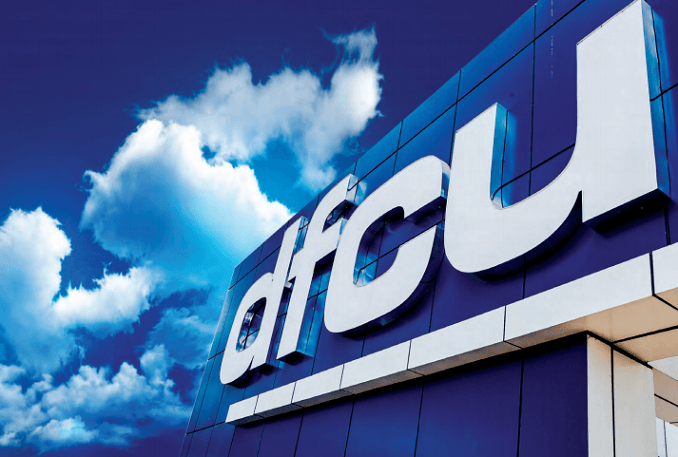When Dfcu controversially bought Crane Bank Limited (CBL) in January 2017, it immediately became one of the most profitable banks in Uganda as the former owners of CBL cried for the loss of their bank.
Dfcu’s Crane bank acquisition boosted its profitability in 2017 with net profit nearly tripling to Shs127 billion, up from Shs46. 27 billion in 2016 and Shs37 billion in 2015. That year only Stanbic Bank, the largest bank in the country by assets, could come near Dfcu.
To achieve the milestone above, Dfcu rode on the loans it had acquired from CBL, which was unfairly closed by the Bank of Uganda (BoU) in October 2016, for allegedly being undercapitalized.
Lowest Net Profit Since 2007
Dfcu’s low loans uptake explained, CBL in picture
Like already said above, Dfcu benefited a lot from the loans acquired from CBL. When they ended, Dfcu fell into trouble. They could not innovate the new ways of selling loans.
The financial statement of Dfcu for 2021 confirms how important were the acquired CBL loans: “Loans and advances declined by 15.03 per cent in step with fair value losses on other financial instruments reducing by 38.87 per cent to Shs30.86 billion ($8.60 million) largely held up by loans acquired from the purchase of Crane Bank.”
Remember that Abdu Katuntu’s COSASE inquiry established that CBL was unfairly closed by BoU. And BoU’s Benedict Sekabira confirmed that CBL before it was closed only needed about Shs150 billion to stay afloat, yet his colleagues then Justine Bagyenda and Louise Kasekende claimed BoU had sunk in CBL Shs478 billion for liquidity purposes, even though BoU officials then failed to account for all the money.
To protect its bad business with Dfcu, BoU officials wanted CBL shareholders to pay about Shs397 billion, allegedly embezzled. They would sue Sudhir Ruparelia and Meera Investments, all belonging to Ruparelia Group of Companies. But MPs in the 10th Parliament said CBL shareholders could not pay Shs397 billion because they never accessed it.
However, in the ruling delivered by the Supreme Court of Uganda in February 2018, the Supreme Court upheld the earlier rulings of the High Court and Court of Appeal that the BoU) pay the costs of the Shs397 billion case the central bank and Crane Bank Limited (CBL) in Receivership lodged against Sudhir Ruparelia and Meera Investments, alleging that the respondents had swindled Shs397 billion from the former CBL.
In his ruling of August 26, 2017, Justice David Wangutusi agreed with Sudhir and Meera Investments that CBL in Receivership had no capacity to sue because it had no locus Operandi, awarding costs of the suit to the respondents. BoU rushed to the Court of Appeal and the ruling of the High Court was upheld to their dismay.
Remember that in the Shs 200 billion transaction Dfcu was misled by BoU to believe that 48 CBL branches then belong to the bank, which was not the case. It could be stripped of the branches in a legal battle by Crane Management Property Services, the rightful owner of the branches.
Since then, Dfcu has had bad business, seeing its growth in different business lines coming down. That is why its post-tax earnings in the financial year 2021 fell 61.32 per cent to Shs9.31 billion, underperforming our end-of-year estimates by 80.57 per cent.
Latest Financial Statements
According to the latest financial statements, the reduction in Dfcu’s earnings was due to higher provisions that spiked 384.32 per cent to Shs148.36 billion, exceeding the cumulative provisions over the prior 5-years (2016-2020) of Ohs 134.89 billion ($37.57 million).
As a result, Dfcu’s credit loss ratio (CLR) jumped to 9.84 per cent, far above 1.73 per cent that Dfcu reported in 2020 and the 5-year average CLR of 3.56 per cent.
Non-performing loans nearly doubled with a 191.25 per cent jump moving the NPL ratio to 18.17 per cent from 5.30 per cent in 2020 (FY2021 local listed peer bank average NFL: 7.43 per cent).
New income less than 2020 figures
Despite the sharp reduction in FY2021 earnings, total incomes rose to Shs450.14 billion ($125.37 million), but remained 5.03 per cent below our FY2021 projected revenues of Shs473.97 billion ($133.51 million).
Net interest income up
Dfcu’s strategy to move away from expensive deposit funding may have paid off as net interest income (NII) rose 17.10 per cent further improving net interest margins (NIMs) to 11.29 per cent from 9.92 per cent in 2020.
Return on investment down
While the group appears to have made modest improvements to the cost to income (FY2021:49.79 per cent versus FY2020: 62.99 per cent), the impact of provisions depressed return on assets (ROaA) to 0.28 per cent from 0.75 per cent and return on equity (ROaE) to 1.57 per cent relative to 4.14 per cent last year.
Financial Highlights:
Revenues improved 8.55 per cent to Shs450.14 billion ($125.37 million) supported by a 34.55 per cent increase in non-interest income to Shs95.34 billion ($26.55 million).
Interest income was up 3.19 per cent to Shs354.80 billion ($98.82 million) with interest on government and other securities rising by 6.30per cent to Shs 63.27 billion ($17.62 million).
Operating expenses dropped by 4.24 per cent to Shs183.52 billion ($51.11 million) from Shs191.64 billion ($53.37 million) lowering the cost to income to 49.79 per cent from 62.99 percent.
Impairment losses up five-fold
However, impairment losses rose five-fold (384.32 per cent) to Shs148.36 billion ($41.32 million) from Shs30.63 billion ($8.53 million) in 2020.
Total assets slump
Total assets for the group were down 10.34 per cent to Shs3.14 trillion ($873.63 million) attributable to an 88.52 per cent drop in marketable securities.
However, Dfcu saw its liabilities drop by 12.49 percent to Shs2.54 trillion ($708.18 million) from Shs2.91 trillion ($809.27 million) attributed to declines in both customer deposits and borrowed funds by 12.07 per cent each, a 12.73 per cent drop in subordinate debt and provisions shrinking by 13.10 per cent to Shs2.19 billion ($609.95 million).
Shareholders’ equity flat
Shareholders’ equity was flat with a gain of just 0.19 per cent to Shs594.03 billion ($165.44 million) from Shs592.91 billion ($165.13 million) in 2020. Retained earnings increased by 14.04 per cent to Shs390.12 billion ($108.65m) from Shs342.10 billion ($95.28 million).
![]()




























